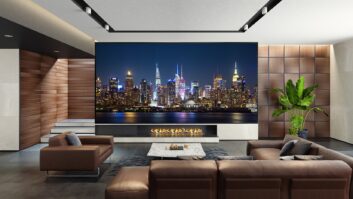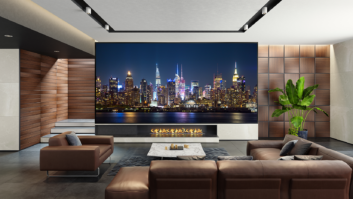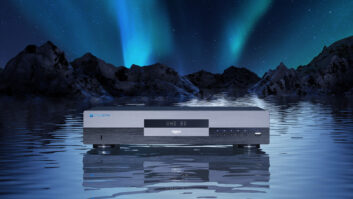Readers of my column know that I have been a proponent of Media Center solutions for the home for a number of years. But we all know that the Media Center, for all its strengths of storing, cataloging, and distributing digital content throughout the home across a variety of platforms also has some inherent weaknesses. Specifically:
The Media Center is a desktop application on a Windows XP of Vista platform. One can easily minimize this application to expose the desktop and the end-user (your client) could adversely effect the systems stability with software downloads that could disrupt the media management and home control services of their Windows platform.
The XP and Vista platforms are living operating systems that depends on frequent downloads to prevent security holes, eliminate bugs, and provide additional software features. Unfortunately, these Microsoft-initiated downloads are often unaware of the effect they may have on the stability of third-party Media Center and home control applications.
The Media Center, even with Extender technologies, cannot support synchronized whole-house audio solutions without the addition of third-party products, or guarantee the quality of service of HD video streams across standard 10/100/1000 switches.
To address these issues a company called FUZE Media Systems (www.fuzeav.com) in San Jose, California, has launched a whole-house audio/video product solution suite based on the Media Center platform that virtually eliminates these issues and greatly improves the reliability of the platform for professional integrator deployment and support.
FUZE has developed a whole-house audio/video solution platform that does not allow you to expose the underlying Vista operating system. When you first boot up the server the screen that you and your client see is FUZE home page, which has support for: live TV, recorded TV (using the standard Media Center Electronic Program Guide), music library, DVD library (using the MyMovies enhancement software), picture library, photo library, XM Radio (this option and the following two options will be available by Q2, 2008), cameras, and weather.
You cannot minimize this home screen to expose the operating system. The end-user can only navigate the control of their home via these onscreen menu options.
FUZE also mitigates the operating system upgrade issue by pushing only upgrades to their platform that they have first tested and approved. If Microsoft wants to push an update to the Vista platform it is first reviewed by the engineers at FUZE and if they determine that the upgrade does not undermine the stability of their software solution then, and only then, will the upgrade be pushed from FUZE to their clients home servers.
Multiple Audio Streams
Resolving the third issue is where FUZE has deployed most of its engineering resources. To enable multiple, synchronous, audio streams from a Media Center (that inherently only outputs one audio stream) FUZE uses external USB-attached boxes that stream up to three synchronous channels (per USB port) of stereo audio and control communications over Cat-5 wire to amplified in-wall FUZETunes controllers or distributed amps/receivers located in audio zones throughout the home.
This is similar to an A-BUS amplified in-wall solution but with the additional ability to access multiple audio streams from a Windows Media 11-based computer. With up to six USB ports you could stream independent digital audio sources to up to 19 zones throughout the home (including the stream from the FUZE server itself).
Video Switching
On the video switch front, the FUZE system was designed from the ground up to prevent bottlenecks that can effect the viewing quality of multiple HDTV streams across a commonly used 10/100/1000 switch. The FUZE system operates on its own parallel gigabit network so it is never interrupted by online gaming, file downloads, or other network traffic.
Currently FUZE is not offering home control upgrade options to control subsystems like lighting, thermostats, or security panels in an effort to ensure that their solution is a rock solid platform for the distribution of digital music, recorded television, movies, and photos.
FUZE understands that for the Media Center to be taken seriously by the custom integration community it must prove that this platform is as reliable as the other solutions now offered by our channel. The steps that FUZE have taken go a long way toward meeting this goal.
Gordon van Zuiden ([email protected]) is president of cyberManor, in
Los Gatos, California.






